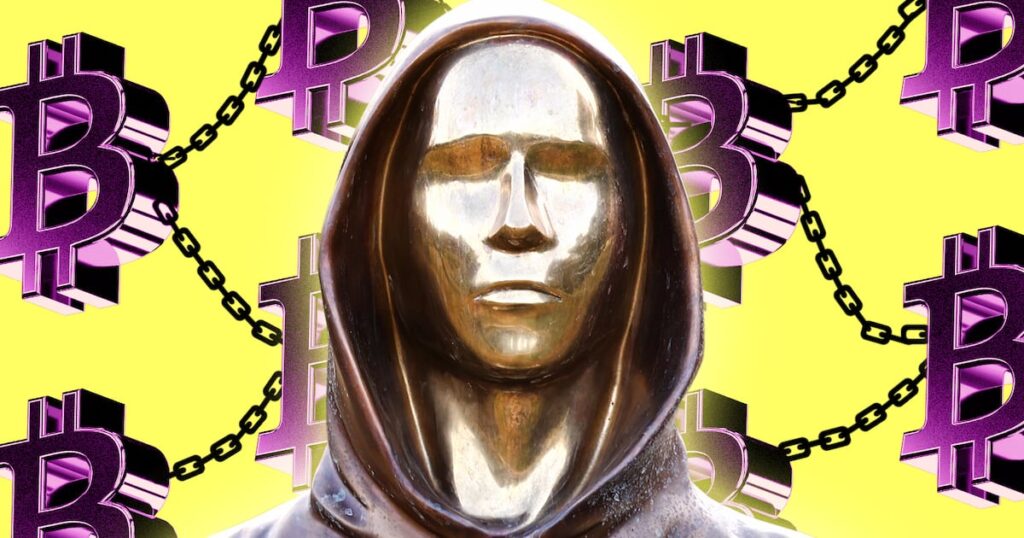- A quantum computer could soon find its way into the wallets of Bitcoin creators.
- Wallets use an older format that ties funds directly to a user’s public key.
A recent breakthrough in quantum computing threatens Bitcoin.
That’s according to Emin Gün Sirer, founder of the Avalanche blockchain, who says developments including Google’s new Willow quantum computing chip risk breaking the encryption that underpins creator Satoshi Nakamoto’s wallets.
Nakamoto, the pseudonymous creator of Bitcoin, holds more than 1.1 million coins — valued at about $107 billion — in legacy Pay-To-Public-Key, or P2PK, wallets, which tie funds directly to the key public of a user and require a private key. “password” to spend.
As powerful quantum computing technologies advance, capable of quickly breaking current encryption, these old wallets are at increasing risk of being hacked by malicious actors seeking access to this immense digital fortune.
“As QC becomes threatening, the Bitcoin community might want to consider freezing Satoshi coins, or more generally, providing an expiration date and freezing all coins at P2PK utxos,” said Avalanche blockchain founder Emin Gün Sirer on X, referring to older and older pieces. Vulnerable output types.
For most users, avoiding the quantum computing threat is as simple as transferring coins to a newer wallet that doesn’t use P2PK.
But Nakamoto hasn’t touched his wallets since 2010. It’s unclear whether the Bitcoin creator chose not to access the wallets or, as some believe, took the Bitcoin fortune to his grave.
Regardless, as quantum computing advances, wallets could become a major target.
Join the community to receive our latest stories and updates
A quantum “arms race”
Announced Monday, Google’s Willow chip has 105 qubits, or quantum bits, to process information, a 56% improvement over the company’s previous model, Sycamore.
Crypto developers have long known that quantum computers have the potential to defeat blockchain encryption. They can be used to run “Shor’s algorithm,” a quantum algorithm that quickly transforms large numbers into prime factors, to decrypt the private keys behind crypto wallets.
Ethereum co-founder Vitalik Buterin, along with dozens of other crypto developers, claim they can upgrade blockchains like Bitcoin or Ethereum to make them quantum-proof.
On the other hand, outdated Bitcoin P2PK wallets cannot be upgraded.
Solana founder Anatoly Yakovenko suggested that Nakamoto’s P2PK wallet could spark a “quantum computing arms race” as multiple parties race to advance the technology and get into the wallets first.
And it’s not just Nakamoto’s Bitcoin that is in danger.
According to a study by auditing firm Deloitte, more than 4 million Bitcoins, or approximately 20% of all coins in circulation, are held in P2PK wallets.
Possible solutions
One possible solution, suggested by Sirer, is for the Bitcoin community to agree to upgrade the network to freeze Satoshi coins.
This means that even if someone uses quantum computers to break the encryption of Nakamoto’s wallets, they will not be able to transfer or sell the Bitcoin inside.
It might be difficult to reach consensus.
Last year, Bitcoin developers failed to agree on whether to patch a Lightning Network vulnerability. The bug was added to the National Vulnerabilities Database on December 8, more than a year after it was discovered.
Many times, groups within the Bitcoin community have split off to create their own versions of the top cryptocurrency due to differences in how they think the technology should be developed.
But if the development of quantum computers accelerates, Bitcoin developers may need to quickly agree on a plan of action.
Tim Craig is DL News’ DeFi correspondent based in Edinburgh. Contact us with advice at tim@dlnews.com.




